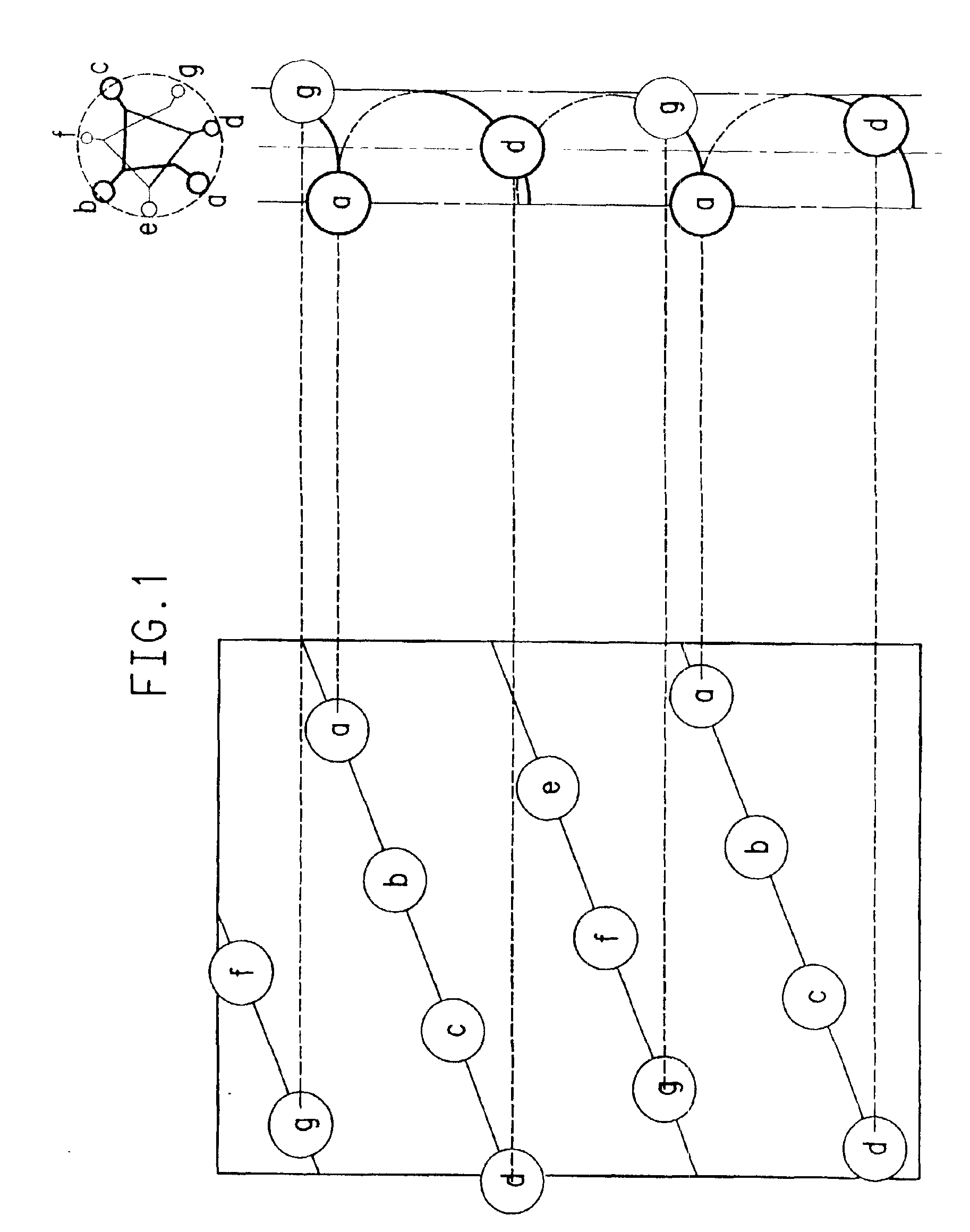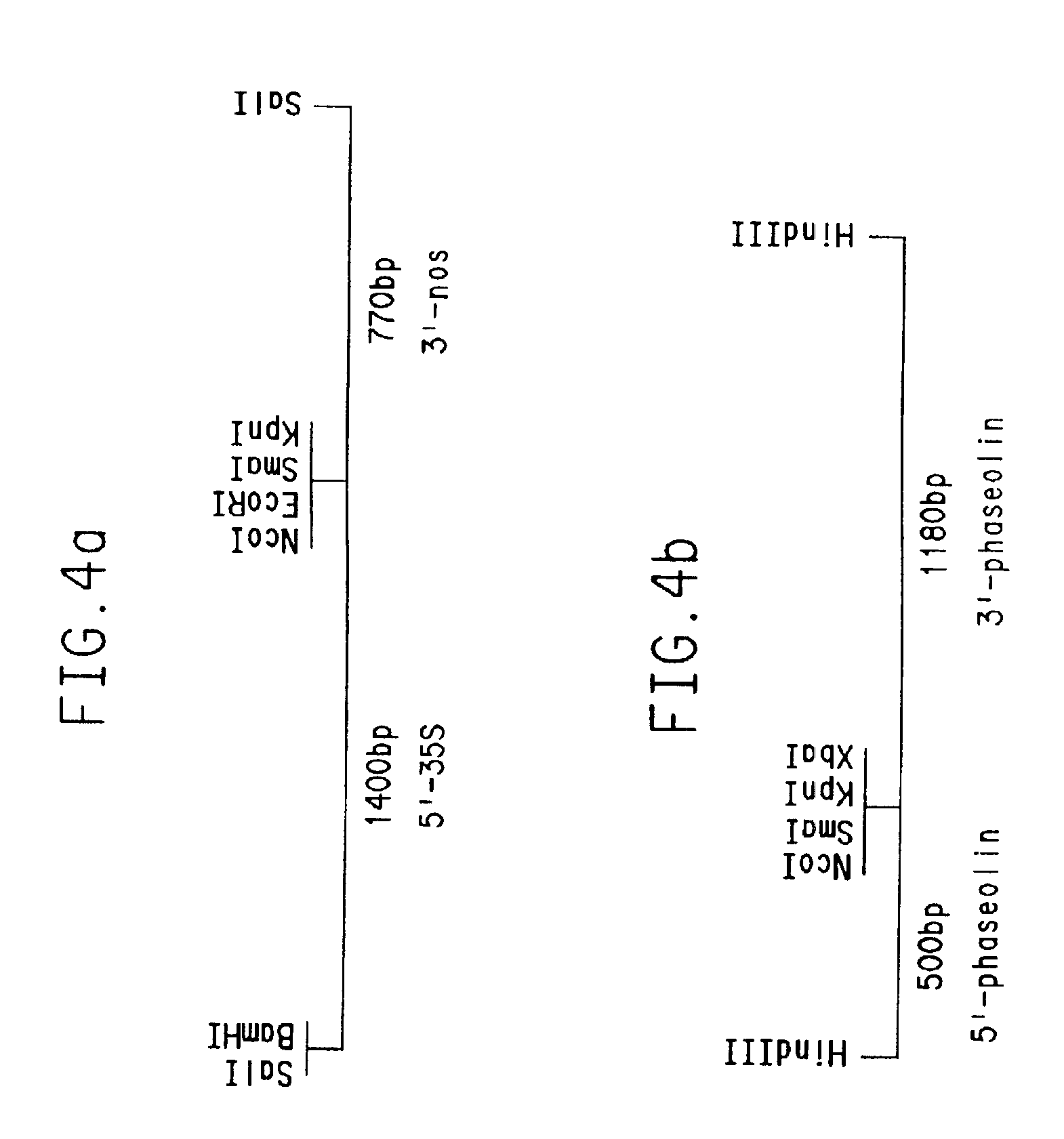Chimeric genes and methods for increasing the lysine and threonine content of the seeds of plants
a technology of lysine and threonine and seeds, applied in the field of chimeric genes, can solve the problems of poor agronomic qualities, increased susceptibility, reduced yield, etc., and achieve the effect of reducing the accumulation of lysine breakdown products and reducing enzyme activity
- Summary
- Abstract
- Description
- Claims
- Application Information
AI Technical Summary
Benefits of technology
Problems solved by technology
Method used
Image
Examples
example 1
Isolation of the E. coli lysC Gene and Mutations in lysC Resulting in Lysine-insensitive AKIII
[0256]The E. coli lysC gene has been cloned, restriction endonuclease mapped and sequenced previously [Cassan et al. (1986) J. Biol. Chem. 261:1052-1057]. For the present invention the lysC gene was obtained on a bacteriophage lambda clone from an ordered library of 3400 overlapping segments of cloned E. coli DNA constructed by Kohara, Akiyama and Isono [Kohara et al. (1987) Cell 50:595-508]. This library provides a physical map of the whole E. coli chromosome and ties the physical map to the genetic map. From the knowledge of the map position of lysC at 90 min on the E. coli genetic map [Theze et al. (1974) J. Bacteriol. 11 7:133-143], the restriction endonuclease map of the cloned gene [Cassan et al. (1986) J. Biol. Chem. 261:1052-1057], and the restriction endonuclease map of the cloned DNA fragments in the E. coli library [Kohara et al. (1987) Cell 50:595-508], it was possible to choose...
example 2
High Level Expression of Wild Type and Mutant lysC Genes in E. coli
[0263]An Nco I (CCATGG) site was inserted at the translation initiation codon of the lysC gene using the following oligonucleotides:
[0264]
SEQ ID NO:2:GATCCATGGC TGAAATTGTT GTCTCCAAAT TTGGCGSEQ ID NO:3:GTACCGCCAA ATTTGGAGAC AACAATTTCA GCCATG
When annealled these oligonucleotides have BamH I and Asp718 “sticky” ends. The plasmid pBT436 was digested with BamH I, which cuts upstream of the lysC coding sequence and Asp718 which cuts 31 nucleotides downstream of the initiation codon. The annealled oligonucleotides were ligated to the plasmid vector and E. coli transformants were obtained. Plasmid DNA was prepared and screened for insertion of the oligonucleotides based on the presence of an Nco I site. A plasmid containing the site was sequenced to assure that the insertion was correct, and was designated pBT457. In addition to creating an Nco I site at the initiation codon of lysC, this oligonucleotide insertion changed t...
example 3
Isolation of the E. coli and Corynebacterium glutamicum dapA Genes
[0285]The E. coli dapA gene (ecodapA) has been cloned, restriction endonuclease mapped and sequenced previously [Richaud et al. (1986) J. Bacteriol. 166:297-300]. For the present invention the dapA gene was obtained on a bacteriophage lambda clone from an ordered library of 3400 overlapping segments of cloned E. coli DNA constructed by Kohara, Akiyama and Isono [Kohara et al. (1987) Cell 50:595-508, see Example 1]. From the knowledge of the map position of dapA at 53 min on the E. coli genetic map [Bachman (1983) Microbiol. Rev. 47:180-230], the restriction endonuclease map of the cloned gene [Richaud et al. (1986) J. Bacteriol. 166:297-300], and the restriction endonuclease map of the cloned DNA fragments in the E. coli library [Kohara et al. (1987) Cell 50:595-508], it was possible to choose lambda phages 4C11 and 5A8 [Kohara et al. (1987) Cell 50:595-508] as likely candidates for carrying the dapA gene. The phages ...
PUM
| Property | Measurement | Unit |
|---|---|---|
| weight percent | aaaaa | aaaaa |
| concentration | aaaaa | aaaaa |
| optical density | aaaaa | aaaaa |
Abstract
Description
Claims
Application Information
 Login to View More
Login to View More - R&D
- Intellectual Property
- Life Sciences
- Materials
- Tech Scout
- Unparalleled Data Quality
- Higher Quality Content
- 60% Fewer Hallucinations
Browse by: Latest US Patents, China's latest patents, Technical Efficacy Thesaurus, Application Domain, Technology Topic, Popular Technical Reports.
© 2025 PatSnap. All rights reserved.Legal|Privacy policy|Modern Slavery Act Transparency Statement|Sitemap|About US| Contact US: help@patsnap.com



